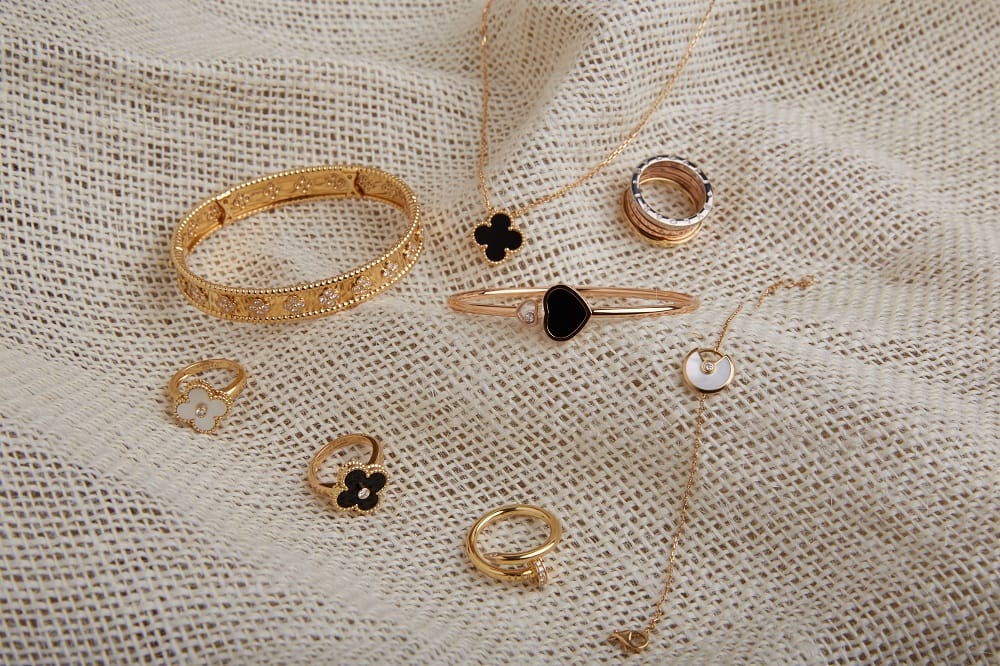Blog
How to Choose the Best Metal for Your Bracelet: Silver, Gold, or Platinum?
How to Choose the Best Metal for Your Bracelet: Silver, Gold, or Platinum?
When it comes to selecting a bracelet, the type of metal you choose plays a significant role in determining its overall look, durability, and value. Whether you’re looking for a simple accessory for everyday wear or a more luxurious piece for special occasions, the metal you choose can elevate your style. The most popular metals for bracelets are silver, gold, and platinum, each offering its own unique qualities and appeal.
In this guide, we’ll walk you through the pros and cons of these three metals, helping you make an informed decision on which one suits your style, budget, and lifestyle best.
1. Silver Bracelets: Affordable Elegance
Silver is one of the most popular metals for bracelets due to its timeless elegance, versatility, and affordability. Known for its bright, shiny finish, silver offers a sophisticated and chic look that can easily complement any outfit, whether casual or formal. It’s also a great choice for those new to wearing jewelry or those who want a stylish piece without breaking the bank.
1.1. Types of Silver
There are different types of silver available, with sterling silver being the most common choice for bracelets. Sterling silver is made up of 92.5% pure silver and 7.5% of another metal, usually copper, to enhance its durability. This combination gives sterling silver its characteristic shine while ensuring it remains strong enough for daily wear.
Other silver variations include fine silver (99.9% pure silver) and argentium silver (which includes a small amount of germanium to enhance tarnish resistance), but sterling silver remains the most popular and affordable option.
1.2. Pros of Silver Bracelets
- Affordability: Compared to gold and platinum, silver is relatively affordable, making it a great entry-level option for people new to bracelets or those seeking a fashionable piece without a hefty price tag.
- Versatility: Silver complements all skin tones and can be paired with a wide range of other jewelry, making it an excellent option for daily wear.
- Shiny Finish: Silver has a bright, reflective surface that adds elegance to any outfit, whether it’s a casual look or something more formal.
1.3. Cons of Silver Bracelets
- Tarnishing: One downside to silver is that it can tarnish over time, especially when exposed to air, moisture, or certain chemicals. However, regular cleaning and proper storage can help maintain its shine.
- Softness: While silver is relatively durable, it’s softer than gold and platinum, which means it can scratch or dent more easily with frequent wear.
2. Gold Bracelets: Timeless Luxury and Warmth
Gold has long been associated with wealth, luxury, and status, making it a popular choice for high-end bracelets. Available in a variety of colors (yellow, white, and rose), gold is a versatile metal that works well for both everyday wear and special occasions. Its natural luster and rich color add a touch of sophistication to any jewelry collection.
2.1. Types of Gold
Gold is typically alloyed with other metals like copper, silver, or palladium to improve its strength and durability, as pure gold (24k) is relatively soft. The most common gold alloys used in bracelets are 10k, 14k, 18k, and 22k, with 14k and 18k being the most popular choices for jewelry due to their balance of purity and durability.
- Yellow Gold: The classic gold hue, known for its rich, warm glow. It’s the most traditional option for bracelets.
- White Gold: Made by alloying gold with white metals like palladium or nickel, white gold has a sleek, modern appearance and is often coated with rhodium to enhance its white shine.
- Rose Gold: Created by adding copper to gold, rose gold has a pinkish hue that’s both romantic and contemporary, making it a popular choice for stylish bracelets.
2.2. Pros of Gold Bracelets
- Timeless Appeal: Gold is one of the most classic and enduring metals in jewelry, making it an ideal choice for an investment piece or an heirloom-quality bracelet.
- Rich Color: The warm, radiant color of gold can complement both light and dark skin tones, adding a luxurious touch to your wrist.
- Durability: Gold is a more durable metal than silver, especially in its higher karat forms, making it less prone to scratching or tarnishing.
2.3. Cons of Gold Bracelets
- Cost: Gold is more expensive than silver, especially when choosing higher karat options like 18k or 22k. This can make it a more significant investment.
- Weight: Gold bracelets tend to be heavier than silver or platinum, which may not appeal to those looking for lightweight jewelry.
- Tarnishing (for White Gold): White gold, especially when alloyed with nickel, may lose its shiny appearance over time and require re-plating with rhodium to maintain its luster.
3. Platinum Bracelets: Luxury, Rarity, and Durability
Platinum is the rarest and most expensive of the three metals, known for its luxurious feel, natural white color, and incredible durability. It is a highly sought-after material for fine jewelry, including bracelets, and is often considered a status symbol due to its exclusivity and high value.
3.1. Characteristics of Platinum
Platinum is a naturally white metal, which means it doesn’t need rhodium plating to maintain its color, unlike white gold. It is also denser and heavier than both silver and gold, giving it a solid, substantial feel when worn. Platinum’s purity is typically higher than that of gold, with most platinum jewelry containing 90% to 95% pure platinum.
3.2. Pros of Platinum Bracelets
- Durability: Platinum is incredibly durable and resistant to wear, making it an ideal choice for everyday jewelry that will stand the test of time. It’s highly resistant to scratching and tarnishing, making it a low-maintenance option.
- Luxurious Look and Feel: Platinum has a sleek, white sheen that gives it a sophisticated and high-end appearance. It also has a heavier feel, adding to its luxurious nature.
- Hypoallergenic: Platinum is a hypoallergenic metal, making it an excellent choice for people with sensitive skin or metal allergies.
3.3. Cons of Platinum Bracelets
- High Cost: Platinum’s rarity and durability make it the most expensive option of the three metals. This can make platinum bracelets a significant investment.
- Weight: While some may appreciate the substantial feel of platinum, others may find it too heavy compared to lighter metals like silver or gold.
- Less Availability in Designs: Because platinum is a harder metal to work with, platinum bracelets can sometimes be less diverse in design compared to gold or silver options.
4. Which Metal Should You Choose?
The choice between silver, gold, and platinum ultimately comes down to your budget, style preferences, and intended use of the bracelet. Here’s a breakdown of which metal might be the best choice for you:
- Go for Silver if you’re looking for an affordable, versatile bracelet that can be worn daily and pairs well with a variety of outfits. Silver is perfect for those on a budget but still looking for a stylish and elegant option.
- Choose Gold if you want a classic, luxurious piece that will add a touch of sophistication to your look. Gold offers the perfect balance of style and durability and is available in a variety of colors to suit your personal taste.
- Opt for Platinum if you’re seeking a high-end, durable bracelet that will last a lifetime. Platinum is perfect for those who want a statement piece that exudes luxury, and it’s ideal for people with sensitive skin.
Conclusion
Selecting the best metal for your bracelet depends on your personal style, budget, and the occasion for which you’re purchasing the piece. Silver is affordable and versatile, gold offers timeless elegance, and platinum provides unmatched durability and luxury. Each of these metals has its own unique qualities that can suit a variety of preferences. By considering the pros and cons of each, you can find the perfect metal that reflects your style and meets your jewelry needs.




